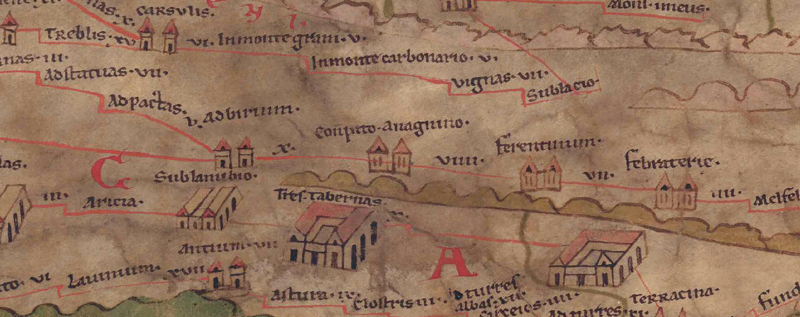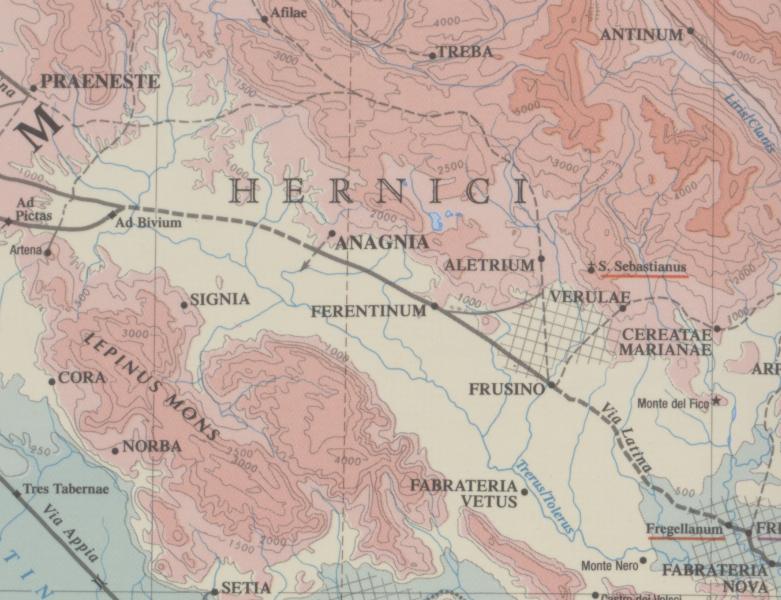
Tabula Peutingeriana – Einzelanzeige
| Toponym TP (aufgelöst): | Conpito Anagnino |
| Name (modern): | südl. v. Anagni [Pleiades] |
| Bild: |  Zum Bildausschnitt auf der gesamten TP |
| Toponym vorher | X Ad birium (Ad Birium) |
| Toponym nachher | VIIII Ferentinum |
| Alternatives Bild | --- |
| Bild (Barrington 2000) |
 |
| Bild (Scheyb 1753) | --- |
| Bild (Welser 1598) | --- |
| Bild (MSI 2025) | --- |
| Pleiades: | https://pleiades.stoa.org/places/422908 |
| Großraum: | Italien |
| Toponym Typus: | Ortsname mit Symbol |
| Planquadrat: | 5B1 |
| Farbe des Toponyms: | schwarz |
| Vignette Typus : | A Doppelturm |
| Itinerar (ed. Cuntz): | Compitum (305,1) |
| Alternativer Name (Lexika): | Anagnia (DNP) |
| RE: | Compitum Anagninum - https://elexikon.ch/RE/IV,1_793.png |
| Barrington Atlas: | Anagnia (43 E3 / 44 C2) |
| TIR / TIB /sonstiges: |
|
| Miller: | Conpito. Anagnino |
| Levi: | Conpito. Anagnino (A,II,14) |
| Ravennat: |
|
| Ptolemaios (ed. Stückelberger / Grasshoff): |
|
| Plinius: |
|
| Strabo: |
|
| Autor (Hellenismus / Späte Republik): |
|
| Datierung des Toponyms auf der TP: | Kaiserzeit (Severer & 3. Jh.) |
| Begründung zur Datierung: | Die Weggabelung ist literarisch zwar schon bei Livius belegt, die mansio jedoch erst im Itinerarium Antonini, ihr Eintrag auf der Karte damit spätestens kaiserzeitlich zu datieren. |
| Kommentar zum Toponym: |
Kommentar (Köhner) |
| Literatur: |
[1] Desjardins, Table, p. 185, col. 1-2, no. 2. |
| Letzte Bearbeitung: | 05.12.2025 09:44 |
Cite this page:
https://www1.ku.de/ggf/ag/tabula_peutingeriana/trefferanzeige.php?id=353 [zuletzt aufgerufen am 01.01.2026]